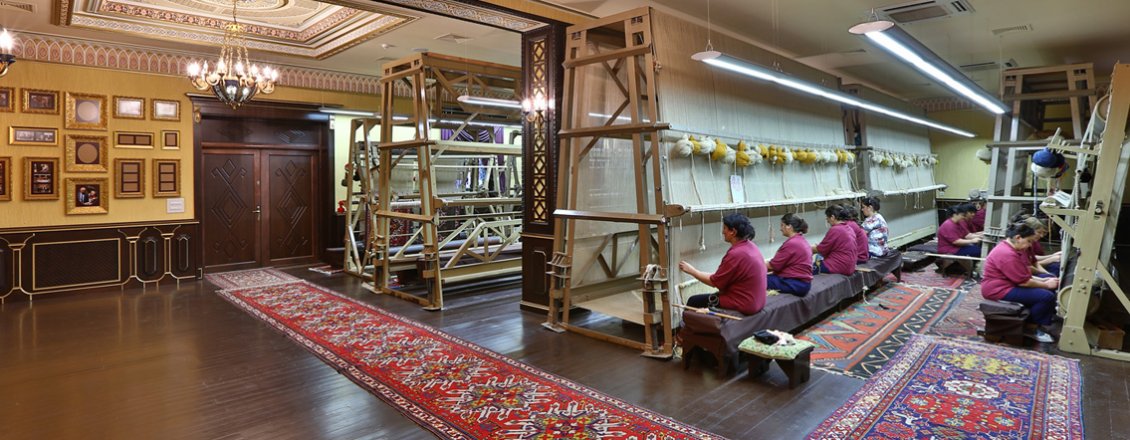Mystique of Azerbaijani rugs

By Amina Nazarli
Bright, colored and unique Azerbaijani carpets are well-known all over the world for their quality and high artistic value.
The country has seven carpet producing regions including Baku, Shirvan, Guba, Tabriz, Karabakh, Ganja and Gazakh and each of them had its own technology, typical patterns and colors.
Wool of lamb or sheep are the major raw materials which make up the famous Azerbaijani carpets. The country also manufactures silk carpets, but its production is limited due to low silk production domestically. That makes them extremely high in price.
Antique Azerbaijani rugs are the honorary "residents" at the White House, State Department, and every important museums in the world including the Metropolitan Museum of Art, Museum of Fine Arts in Boston, Philadelphia Museum of Art, Louvre, Victoria and Albert Museum, Vatican, and the Hermitage.
The skills of this art have been handed down from one generation to another for centuries, and the motifs and the colors used form an essential part of the culture of Azerbaijan.
Vidadi Muradov, the founder and director of the "Azer-Ilme" carpet center spoke about the mysticism and subtleties of Azerbaijani carpets you have not even know yet.
The carpet is a part of Azerbaijanis everyday life, and culture.
It is difficult to find a second example, which would symbolize
Azerbaijan so vividly and comprehensively, like a carpet, Muradov
thinks.
Colors of the national rugs are another reason what attracts many
people. The country has always been famous for its dyers, coloring
the threads of the carpet in thousands of colors.
Color is one of the key components responsible for the beauty of the carpet, and the nature of the Land of Fire provides great opportunities for the development of this industry.
Carpets would never be so amazing and fantastic unless they had such a wonder and mystic mixture of colors. Imagine a carpet woven professionally, but without a color -- it would never catch an eye!
“Until the 1970s, before the discovery of artificial dyes, natural dyes dominated in carpet weaving. They were mainly flowers of plants such as licorice, wild hemp, walnut, pomegranate peel, oak, buckthorn, mulberry, quince, timber, fruits, roots, wood dyeing and even cochineal, an insect, giving a bright red coloring substance,” Muradov said. “The discovery of artificial colors indeed damaged not only the dyeing business, but also the development of carpet weaving.”
Nevertheless, Azerbaijanis could keep the tradition of coloring. Azer-Ilme was able to gather information about 100 dyers and their experience, living in the country’s different regions in the 19th-20th centuries.
In the paint shop of Azer-Ilme wool and silk thread are colored with natural dyes although this process requires a lot of work.
Muradov believes that each carpet, in fact, is the philosophy of
its weaver, making it individual and unique. Each carpet is a human
life, according to the professor, and just as a person comes to
this world only once, each rug is woven in the same spirit, with
the same desire and the same thoughts only once.
The director of the shop, who is engaged in this sphere for more
than 40 years, knows that a weaver is able to reflect his/her
energy on the rug.
”Looking at the carpet, I immediately know with what mood and with what intentions it was weaved. For example, if the carpet weaver is a emotional and sensitive person, it certainly gives the distortion in colors. And conversely, if the carpet waver is a calm person, then the carpet color will be accurate,” he said.
--
Amina Nazarli is AzerNews’ staff journalist, follow her on
Twitter: @amina_nazarli
Follow us on Twitter @AzerNewsAz
